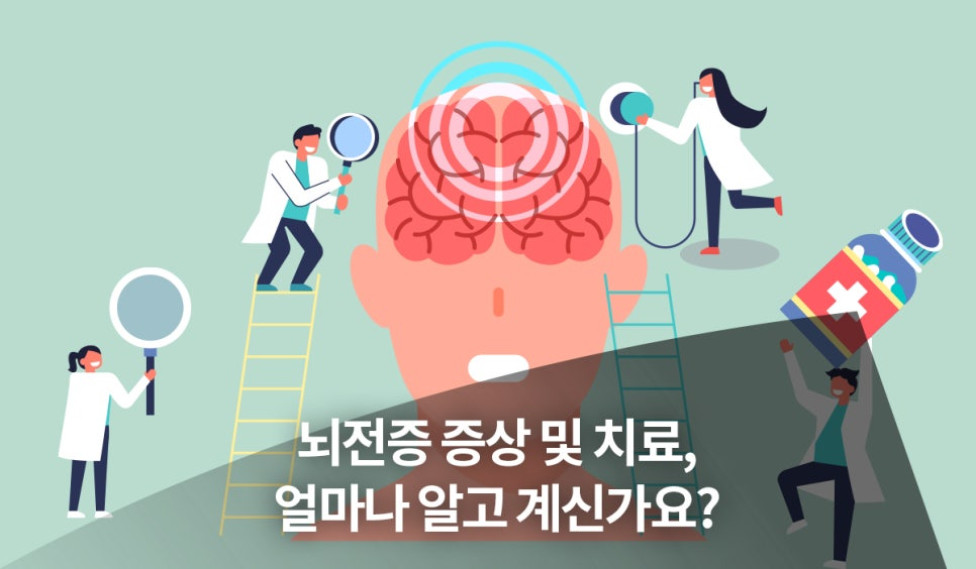Understanding Epilepsy: Causes, Symptoms, and Treatment

The brain, a complex system, contains approximately 100 billion nerve cells (neurons), each forming thousands of connections. Within these cells, tiny electrical currents flow, and between them lie synapses, spaces where electrochemical signals transmit information.
In a healthy brain, nerve cells maintain a regulated rhythm and pattern. However, various factors can cause nerve cells to become excessively active or excited, leading to abnormal electrical signals in parts or all of the brain. This results in seizures. Epilepsy is defined as a condition where seizures occur repeatedly without any external triggers.
In South Korea, epilepsy affects about 0.6% to 0.7% of the population, with higher prevalence rates among infants, children, and the elderly. The challenge lies in the diverse nature of epilepsy, where symptoms, progression, and treatment approaches vary significantly among individuals. Despite its complexity as a chronic condition, epilepsy can be effectively managed with proper care. Increased public awareness and support are crucial due to persistent misconceptions surrounding the condition.
What are the causes of epilepsy?
Epilepsy is a complex group of disorders with dozens of subtypes.
These range from benign epilepsies (recently termed self-limited epilepsies) that manifest only in infancy or childhood and resolve spontaneously, to intractable epilepsies characterized by frequent, difficult-to-control seizures, often accompanied by intellectual disabilities or developmental delays.
Common causes include congenital brain injuries, brain malformations, inborn errors of metabolism, genetic disorders, and encephalitis. In some cases, developmental delays, intellectual disabilities, and autism spectrum disorders may also be present. However, many epilepsy patients have no identifiable cause and are otherwise healthy.
Not all epilepsy cases have a clear cause. In many instances, the cause remains unknown, posing diagnostic and therapeutic challenges. The symptoms, progression, treatment, and prognosis can vary significantly depending on the cause and type of epilepsy.
Do all epilepsy symptoms involve foaming at the mouth and convulsions?
Epilepsy symptoms vary widely, from generalized seizures with loss of consciousness to focal seizures that may appear as brief staring spells. In some instances, the symptoms are so subtle that they go unnoticed by others.
Generalized seizures include tonic-clonic seizures (formerly known as grand mal seizures), characterized by sudden loss of consciousness, breathing difficulties, cyanosis, and muscle contractions; tonic seizures, where the body or parts of it suddenly stiffen; absence seizures (or petit mal seizures), involving a brief pause in activity with staring or head drooping lasting 5-10 seconds; myoclonic seizures, causing sudden, shock-like muscle jerks; and atonic seizures, leading to sudden falls due to loss of muscle tone.
Focal seizures, which occur without loss of consciousness, can manifest as motor seizures with twitching in one hand or arm, or facial twitching; sensory seizures, involving abnormal sensations on one side of the face or limbs; autonomic seizures, causing palpitations, goosebumps, or sweating; and cognitive seizures, triggering sudden memories or feelings of familiarity with past objects or places. Additionally, symptoms such as staring blankly, lip-smacking, or repetitive object manipulation with impaired awareness are common.
Most seizures stop within 2 minutes, but those lasting longer than 5 minutes are considered a medical emergency requiring immediate treatment.
Is epilepsy incurable?
The primary goal in managing epilepsy is to control seizures, which can pose a risk of injury to the patient. Medication can control seizures in most children, and 60-70% of cases resolve spontaneously with age.
Anti-epileptic drugs (anticonvulsants) are used until there is no possibility of seizure occurrence. The management period varies depending on the disease and individual, and there are various side effects of taking medication. Therefore, it is important to manage after detailed consultation with the doctor in charge.
Epilepsy may disappear naturally, but if not, discontinuation may be attempted if there are no seizures for more than 3 years and the electroencephalogram is normal. However, medication may be taken for life if it is determined that the risk of seizures has not disappeared.
Patients with intractable epilepsy have low drug efficacy, and side effects increase due to the use of high-dose drugs. In addition, other diseases such as developmental delay, intellectual disability, and autism spectrum disorder are accompanied, and developmental control is also difficult. At this time, dietary therapy such as a ketogenic diet or surgery may be attempted.
In the past, surgery for epilepsy involved opening the skull widely and inserting electrodes for examination, but recently, minimally invasive surgery is performed. In addition, technology has been developed to measure brain waves and detect seizures using wearable devices. Research for the treatment of epilepsy is actively underway. Since epilepsy is a disease that requires important management, the development of applications that patients can use is also actively underway.
In order for epilepsy patients to better manage their disease, live healthy lives in school and society, and fulfill their roles as members of society, above all, warm understanding and consideration from those around them are necessary.
If you find someone having a seizure on the street, don't be afraid or panicked, report it to 119, tidy up the surroundings so that the patient is not injured, and turning the body to secure the airway during vomiting is also helpful. When a seizure occurs, they cannot breathe and cyanosis appears, but if the heart is beating well at this time, do not perform CPR. Rib fractures may occur due to CPR. If you are tightly closing your mouth, do not try to force your mouth open by putting your hand in it. Teeth may break or fingers may be injured.
After the seizure symptoms stop, it is important to calmly reassure the patient so that they are not surprised or anxious. When epilepsy is understood and cared for together, patients can live healthier and happier lives in our society.








Source :https://blog.naver.com/happy_snubh/223853511849
No comments yet.
